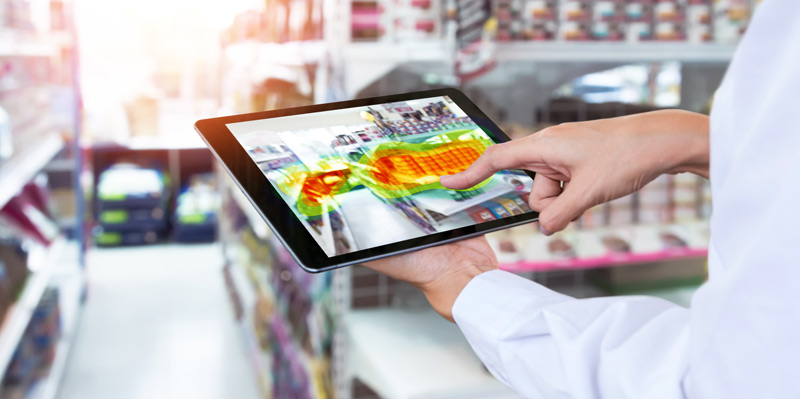Today’s consumers expect personalised services and products that suit their individual situations and needs. They are also starting to expect meaningful and contextual interactions through their preferred digital channels and devices. For retailers with brick and mortar stores, this means grabbing hold of the opportunities that will drive better engagement, create new sales points and build brand loyalty.
The advance of the Internet of Things (IoT) in the retail industry is helping to make this possible by connecting people, things and processes and creating actionable insights that allow retailers to not only respond to customer feedback and behaviour, but to know how to shape the customer experience in response.
Winning customers back to the high street
The high street market is challenging. According to research, town centres in England and Wales have lost 8% of their shops on average in the last five years. The retail sector to be hit the hardest is clothing with more than 750 shops lost.
However, research shows that consumers are still buying, and in many cases, consumer spending is on the rise. The problem is that the majority of shoppers find it much easier to buy what they want online rather than heading to their local store or a shopping outlet. This is the behaviour that retailers now have the power to change with IoT. By giving customers a better in-store experience when they walk through the door, they can convince them to visit more, purchase more and give brand loyalty a much-needed and very welcome boost.
The art and science of in-store tracking
Retailers need to find ways to learn about their customers and evolve the in-store experience. This means taking a scientific approach by applying technology that reveals customer pain points, low inventory, gaps in service, overstocking, missed sales opportunities, ineffective merchandising and more.
Much of the data captured from customers during an in-store visit is similar to what can be captured online, but it must be done so anonymously. While today’s tech-savvy shopper is willing to carry out many of their daily activities online, most don’t like feeling watched or knowing that behavioural data is being collected.
When virtual and physical realms collide
Using IoT devices in-store, retailers can connect with consumers and personalise the shopping experience as they move around the store. From proactively alerting a customer that a product they have bought before is on offer to using proximity marketing to send targeted marketing to screens around the store as the shopper passes by, IoT can create a seamless and meaningful experience that saves customers time and money and which builds trust and brand loyalty in the process.
Connecting with customers in this way can help retailers to determine how and where products should be displayed, and which stores should carry more or less of these products. Do customers stay longer in one area than others? Do they turn left or right when entering the store? Do they leave the store within seconds? Are they choosing more of the products that you have at the back or front of the store? This is data that retailers have never had the chance to collect before and the results can help to turn consumer awareness and sales around.
Lighting the way with beacons
Beacons are small devices powered by Bluetooth Low Energy (BLE) that can be used to transmit information to other BLE-enabled devices, such as mobile phones. To understand how beacon technology works, let’s look at one of the oldest beacons still in use today: the lighthouse. Just as a lighthouse marks hazards using beams of light, beacons are physical landmarks that beam signals to a customer’s mobile phone.
These signals improve how consumers connect and react to their surroundings and allow them to get things done using their phone such as checking which items are in stock or locating an item they have seen online in the store. They can also be used for proximity marketing campaigns, delivering special offers and product information when shoppers pass by or through the store.
Understanding customer behaviour with heatmaps
For retailers wanting more footfall and sales activity in their store, shopper flow is possibly the most important insight to have access to. Knowing how your customers move about your store can help you to meticulously showcase what you understand to be your best product or product mix and to keep up with customer behaviour and trends as they change. This not only helps to create successful products but also improves internal efficiencies.
The application of heatmap analytics is revolutionising how retailers plan store layout and product placement. This software-based solution works alongside the CCTV technology already present in most stores and quite simply records the “hot” and “cold” movements of consumers around the store. Every retailer would like a crystal ball that shows them exactly how to manage merchandising more effectively. Hot and cold zones do just that, allowing retailers to switch up their product displays based on the results.
Bringing the online shopping experience in-store
With the continued growth of online shopping, retailers should now be looking to replicate the frictionless online shopping experience into the store in whichever way they can. With IoT solutions designed to track and analyse consumer behaviour, retailers can craft an in-store shopping experience that is based on needs, expectations and trends.





